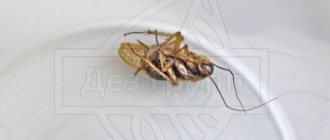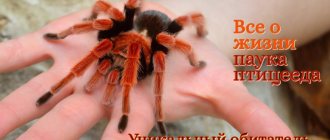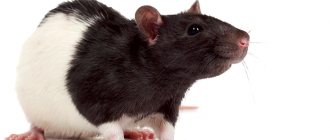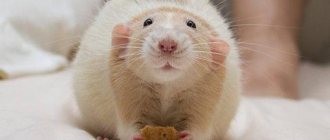A rat is an animal that is included in the genus of rodents in the mouse family. More than 60 species are known. Recently, decorative representatives have become increasingly popular. Such pets have high intelligence. They are very interesting to watch. Decorative rodents do not take up a lot of space and do not require complex care. Often people who want to have such a pet are concerned about how long pet rats live. Unfortunately, the life cycle of rodents is short. It can be extended by following basic recommendations. Life expectancy directly depends on many factors.
Peculiarities
The domestication of tailed animals began at the beginning of the last century. Decorative rats have a keen intelligence, have excellent memory and are highly trainable. In this regard, the popularity of rodents as pets is increasing every year. Even those who do not have warm feelings for rats watch with interest the antics of the eared animals.
The domestic rat is a compact pet. Adults weigh from 300 to 600 grams depending on gender. Boys grow up to be almost twice as big as girls. Most breeds have a slightly elongated muzzle, ears set high and with rounded tips. The body is covered with fur, its thickness and length depends on the specific breed. The tail is most often bare or covered with a small amount of hair. It is noteworthy that in some individuals it is warm to the touch, while in others it is cold.
What you need to know to properly keep rats at home.
How long can a mouse live without food and water?
If food conditions in the area where mice live deteriorate, they migrate to neighboring areas. The natural menu of small rodents is quite extensive, but animals always strive to where there is more food. Wild mice feed on greens, succulent plant roots, insect larvae, berries, shrub bark, and grain crops.
In nature, situations rarely occur when mice have no food or water at all. This only happens during drought or natural disasters. But even in extreme conditions, rodents are capable of fasting for 2–4 days.
In the absence of a sufficient amount of food in the territory familiar to the animals, mice move closer to humans. They eat crops in the fields, spoil garden crops, and undermine the branches and roots of fruit bushes.
Domestic mice do not have the ability to find their own food. Their life completely depends on the owner. Without food and water, a house mouse can live no more than 3 days.
Lifespan
In the wild, the lifespan of a rodent depends on its habitat and rarely exceeds one year. They live as pets for 2-2.5 years.
There are also cases where domestic rats lived up to three years or more. And the Guinness Book of Records notes that the oldest rat lived to the age of 7 years.
The popularity of rodents as pets increased dramatically with the release of the third Harry Potter book. In The Prisoner of Azkaban, there was a certain wizard who lived in the guise of a rat for 12 years. Fans of the world of magic who believed in the long life of pets were in for a slight disappointment. Rats bought at the height of Pottermania lived, like ordinary ones, for 2-3 years .
How long rats live at home is influenced by quality of life, nutrition and genetics. To prolong a pet’s existence, you need to provide it with favorable living conditions. The common belief that rodents can live in any conditions is partly true. However, poor care will certainly affect life expectancy.
An example of proper keeping of furry pets.
Why do rats live short lives?
The lifespan of different animal species is determined at the genetic level. It depends on the animal's ability to reproduce. Rats can breed as early as 1.5 months. A rodent can have up to 14 cubs in a litter. A nursing rat is ready to become pregnant and give birth to new offspring. For this reason, animals of different sexes cannot be kept in the same cage: this is an extra burden on the female.
Another reason for a short life span is rapid metabolism. Because of this, the rat can die without food within 2 days.
Genetics
The lifespan of a house mouse is influenced not only by lifestyle, but also by genetic predisposition.
The fact is that in pet stores, rats live in mixed-sex packs , which does not happen in the wild. Animals living in crowds mate uncontrollably, after which they live in cramped conditions unsuitable for normal existence. It is very difficult to trace the genetics of such an animal, so it is impossible to say how long such a rat will live and what life awaits it.
A completely different situation arises when animals are bred by a breeder. Matings in such cases are planned, and partners are selected depending on temperament. Rat pups from peaceful, sociable parents are prepared for sale as pets. Such babies are brought up in a favorable environment, which prevents the pet from displaying aggression in the future.
Females in nurseries give birth to cubs no more than twice a year . Frequent pregnancies exhaust the animal, as a result of which it produces weak, non-viable litters.
In order for a pet to be healthy, please its owners and live a long life, it must be purchased only in special institutions.
You will learn how to make the life of a pet rat comfortable in this video.
How do the life spans of different breeds of rats differ?
To date, several breeds of rats have been bred, which differ in the structure of their fur, color, and location of their ears. There is a breed of tailless rodents. Although the question here is debatable whether they can be distinguished as a separate breed. If you take a few of the most famous breeds, you get the following:
- standards - rats similar to wild ones. They can have different colors, for example, a blue rat is distinguished by the azure shade of its fur coat;
- bald sphinxes are animals without hair;
- rexes have short, curly hair;
- Double Rexes are shedding rats with fur of varying lengths;
- Dumbo - animals with large “elephant” ears;
- anurans;
- husky - color like a dog of the same breed;
- satin - animals with thin shiny fur.
This is an approximate list that will allow you to identify individual breeds according to their endurance.
White rats of various breeds live the shortest. This is due to the fact that they were bred as laboratory animals, so they have certain damage in their genome. Animals rarely reach 2 years of age.
Sphinxes are quite vulnerable. Lack of fur increases the risk of skin injury and associated infections. The naked body suffers from temperature changes and sunburn.
Tailless individuals lack balance - a rudder, which increases the risk of injury. The tail also serves as protection for the back of the animal.
Rodent character
Those who have never met a rat face to face before can argue that rodents have a bad character. And only the owners of tailed sneaks can say with confidence: this is a loyal and intelligent pet . In terms of intelligence, ornamental rodents are compared to dogs. And for good reason: these are very smart animals.
Each of the domestic rats has a special temperament. You will never meet two identical eared ones. There are homebodies who like to sit in a cage and sleep all day long. Travelers also meet: do not feed such a pet bread, let him walk around the apartment. There are also “revolutionaries”: when they get free (on the carpet, for example), they strive to turn everything in their own way, steal small objects and carry trinkets from place to place.
The rat is an animal that can smile sincerely . Of course, its smile bears little resemblance to a human’s, but scientists have proven that by showing its lower teeth, the rodent expresses its joy at meeting you.
It is also curious that rodents readily respond to their own name. If a mouse gets lost in the bowels of the apartment, you don’t have to rummage through all the closets in search of it (as, for example, in the case of a selfish hamster). Calling the tailed one by name, you will immediately see its ubiquitous face. After all, communication with your beloved owner is more important than any intrigues.
And rats love to communicate . For her, there is nothing so much adored as “her” person. The rat will choose as its “own” the one who will pay it the most attention. She won’t offend the rest of the family, but she won’t give her a championship medal either.
By the way, adult pets treat strangers with caution. You may not recognize your polite mustachioed friend when he grabs the finger of a curious guest. Rats are terribly loyal and devoted, and in the event of a change of owner they do not even try to get used to a new person, often remaining an “abandoned loner” until their death.
Care and maintenance of domestic rats.
When examining a rat's character, the future owner can be given some advice:
- When buying a pet, be prepared to interact with it daily. Communication involves contact, play and hand feeding. This is the only way your “mouse” will be happy. Let your pet sit on your shoulder, lightly tease you, and steal small trinkets from you.
- Introduce your pet to all family members right away so that there are no misunderstandings later.
- Give your rat a name and speak to it often. The smart rodent remembers not only some words, but also perfectly captures the mood by the intonation of its voice.
- Equip the “hole” according to all the rules (they will be described below). This way you will avoid the animal’s constant attempts to escape from the cage. A rat, in love with its home, will happily return there after a walk.
- As you already understand, walks are mandatory for a rodent. Of course, you don't have to take your rat to the park. It is enough to let her out of the cage once a day. If you have a female, then it is not recommended to leave her unattended. The girls are very homely and their whole life consists of trying to “build” a nest. The material for the kennel will be your personal belongings, so keep a close eye on your pet if you are not ready to sacrifice socks as building material.
Why do animals suddenly die?
If your pet roams freely, its life is at risk, the rodent can eat something and get poisoned, it can also get stuck somewhere or be accidentally crushed by household members. You need to watch the animal so that it does not fall from a height, fall out of a window or from a balcony.
Rats that live in a cage all the time can suddenly die from suffocation with food or water, get stuck between the bars of the cage, or suffer from some kind of genetic diseases. In any case, you need to show attention and care, this way you can avoid many dangers.
Dangers of a tame rat
Often, decorative rats die due to the fault of the owner; this can be either an accident or insufficient safety.
The most popular causes of premature death:
- Other pets - attack by a cat, dog or bird.
- Eating inedible items, poisonous plants, detergents.
- Fall from height, etc.
It is important to remember the truth: we are responsible for those we have tamed. Responsibility for the life and health of the pet falls entirely on the owner.
Keeping a pet
Domestic rats have strong immunity and stamina, but this should not be abused. In order for your pet to be healthy and live a long time, you need to carefully care for it.
Purity
The key to good rodent health is cleanliness . You need to wash the cage daily. The tray must be rinsed and treated with products without an aggressive odor. Remember that rodents have a very keen sense of smell, so “fragrant” cleaning chemicals can harm your pet.
In addition to washing the tray, the cage itself must be cleaned. Once a week, thoroughly wash the rods, houses and all equipment in the rodent’s home. Old food supplies should be thrown away so that microbes do not multiply in them. If your pet is very zealous in collecting provisions, then the entire collected set can be replaced with a piece of carrot. No matter how smart the rat is, it has not yet learned to count.
In addition to cleaning the room , it is recommended to occasionally bathe the rat . Rodents are not afraid of water, so there will be no problems with the procedure. Fill the bath with just enough warm water to touch the tummy of the rat standing in it. Let your pet swim, then pat the fur dry with a towel.
Females should be bathed once a month, while males should be bathed more frequently, once every two weeks.
From the video you will learn how to properly care for your tailed friend.
Feeding
The lifespan of a rodent is also affected by the quality of its diet . Only natural products are suitable for feeding your pet. Rats are omnivores by nature, however, if you want to prolong the life of the animal, then you should not indulge its weaknesses.
Rats have a big sweet tooth. They love everything sweet, sticky, delicious-smelling and even salty. If a mouse has once tasted a candy, then, hearing the familiar rustle of the wrapper, it will turn the cage upside down until you give it the sweetness. To avoid such begging, do not give your rat junk food, even as an experiment.
She should be fed natural food high in carbohydrates. Grain is optimal for this purpose. In addition to being saturated with carbohydrates, the rat will be able to wear down its teeth on the grains, which, by the way, grow throughout its life.
In addition to grain, they can be given:
- boiled vegetables, fruits and other plant foods. Over time, each pet develops personal preferences;
- crackers, unsweetened crackers;
- vitamins and minerals from the pharmacy;
- dairy products;
- boiled meat and poultry.
Do not allow your pet to eat food uncontrollably. The daily norm for an adult rodent is 40 g of food. Physical activity in the form of running and walking is required.
Harmful products should be excluded:
- food with seasonings, as well as salty, spicy and fatty foods;
- sweet products, desserts. Chocolate is especially harmful to rats;
- oranges, lemons and other citrus fruits;
- raw potatoes, carrots and other vegetables;
- raw meat and fish;
- grass growing outside.
Arrangement of the house
The moral well-being of a pet plays an important role in its life expectancy. The pet should be warm, cozy and fun .
It is important to choose a cage in which the rodent will be comfortable. The gap between the twigs should not exceed 1 cm. Remember that if the rat was able to stick its head into the hole, then all of it will fit into it. And he will run away.
Rats love to climb various ladders and shelves. You can purchase a ready-made “cottage”, or equip it at your own discretion. The main thing is to ensure that the materials used to create “furniture” are non-toxic.
Arrangement rules:
- exercise equipment must be securely fastened;
- the tray should be deep so that the animal does not come into contact with its own feces;
- a drinking bowl with clean water is required;
- the bedding can be made of sawdust or paper (without printing ink!);
- a house where the rat can retire: a box, a pot, etc.;
- Animals have their own ideas about cleanliness, so the owner must do the cleaning.
Rats are wonderful pets that are great for both adults and children. In order for the pet to please the owner longer, the rodent’s life needs to be arranged in accordance with all the rules.











